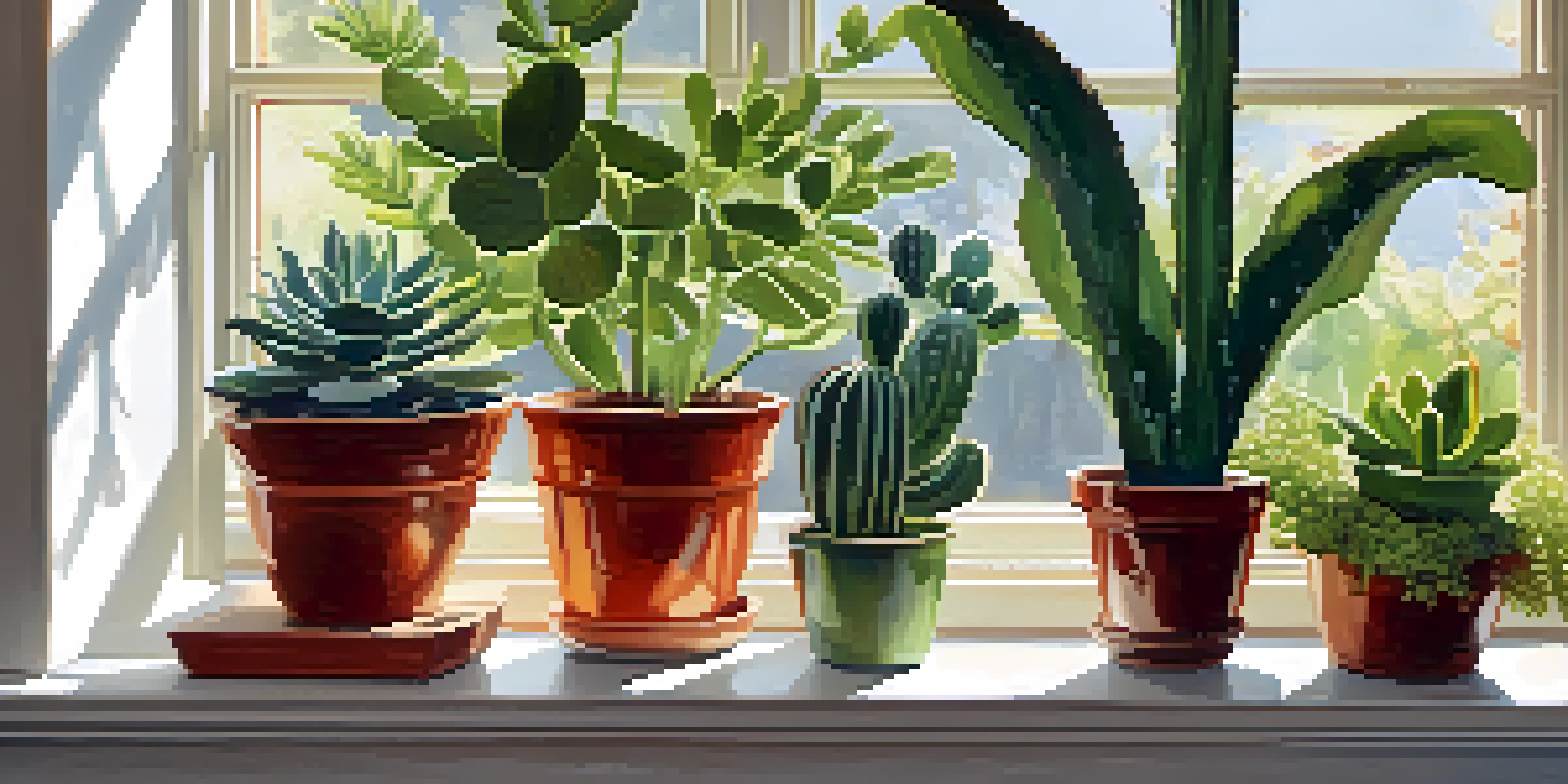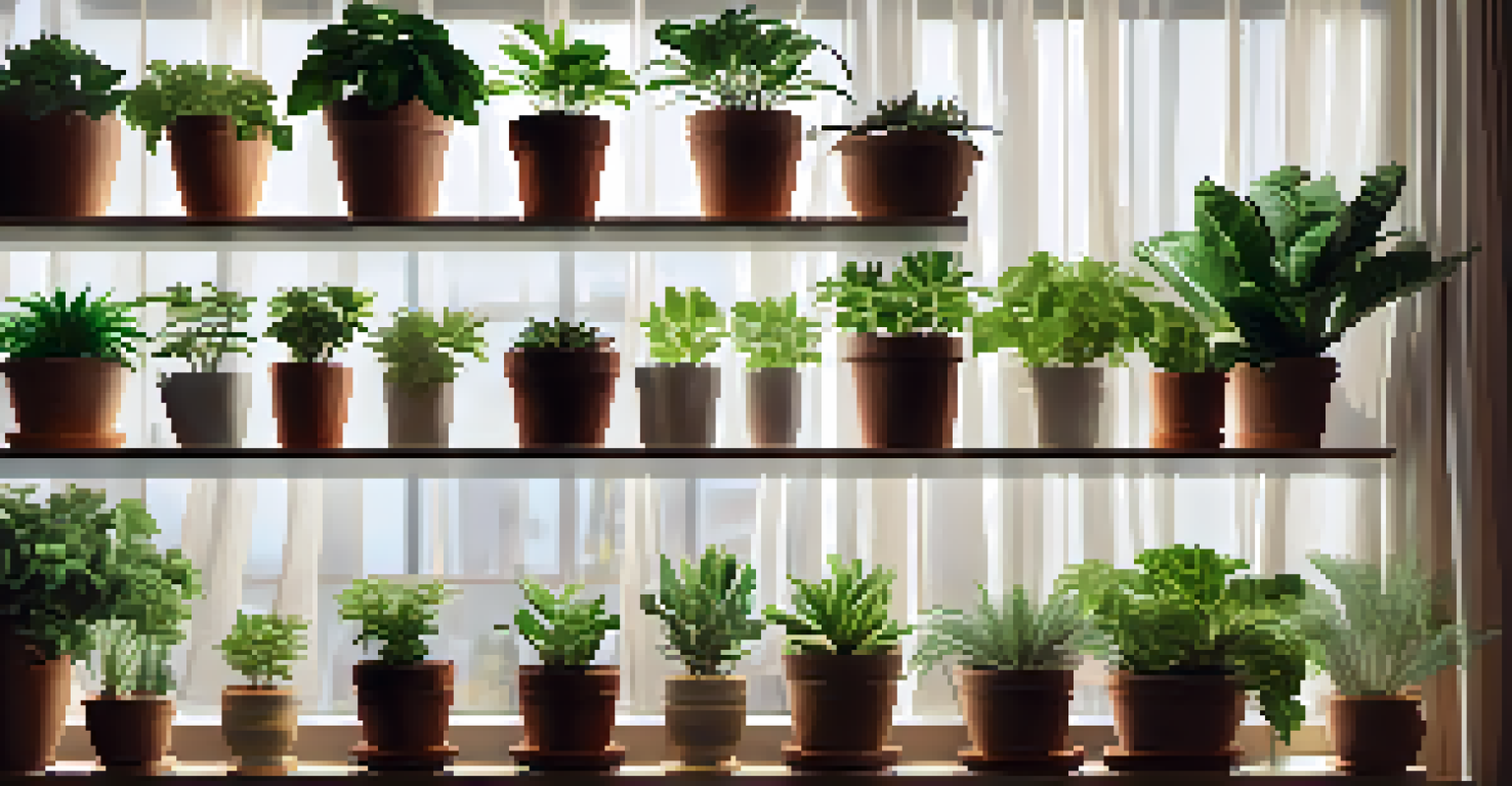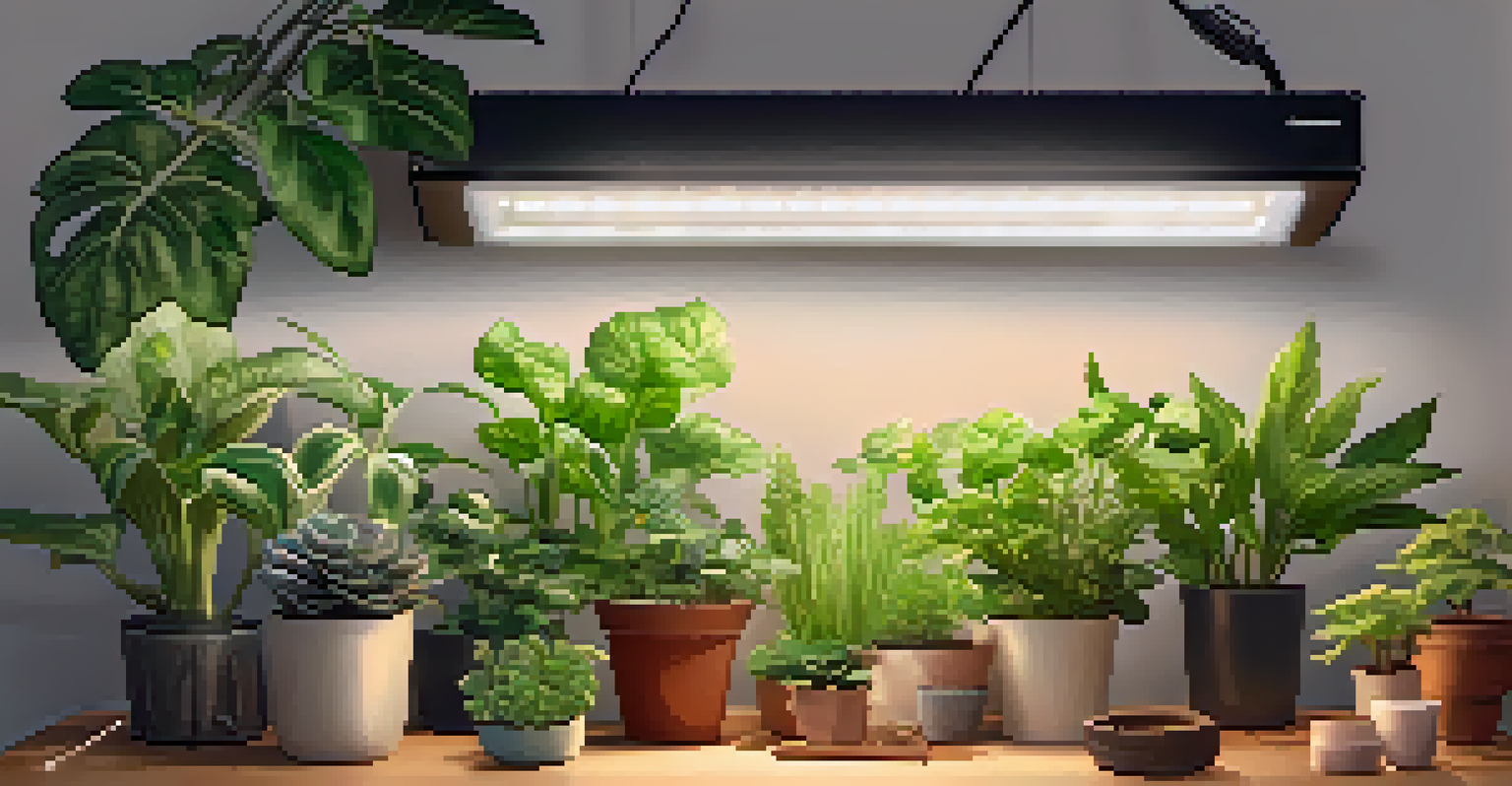Maximizing Light: Best Placement Tips for Indoor Plants

Understanding Your Plant's Light Needs
Every plant has specific light requirements, which can range from low to bright direct sunlight. Understanding these needs is crucial for their growth and vitality. For instance, succulents thrive in bright light, while ferns prefer indirect light.
Plants are like people: they thrive on attention and love, especially when it comes to light.
Start by researching the types of light your plants need. This will help you gauge where to place them in your home. Remember, the right amount of light can mean the difference between lush foliage and a wilting plant.
As you assess your plants, consider the natural light sources in your home, such as windows and skylights. This awareness will guide you in creating the perfect environment for your indoor greenery.
Identifying Light Levels in Your Home
To maximize light for your indoor plants, you first need to identify the light levels in your home. This can vary greatly depending on the direction your windows face and any obstructions like trees or buildings.

A quick way to assess light levels is by observing how long sunlight hits each area throughout the day. Morning light is softer, while afternoon sun can be intense. Place light-loving plants near windows that receive ample sunlight for several hours daily.
Know Your Plants' Light Needs
Understanding the specific light requirements of your plants is essential for their growth and vitality.
Take note of the differences between bright, medium, and low light areas. This understanding will help you place your plants where they can thrive, ensuring they receive the right amount of light for optimal growth.
Utilizing South-Facing Windows for Best Light
South-facing windows generally provide the most sunlight, making them ideal spots for light-loving plants. If you have limited space, consider using these windows as primary locations for your most light-hungry greenery.
The best time to plant a tree was 20 years ago. The second best time is now.
Plants like cacti and citrus trees will flourish in these sunny spots, soaking up the direct sunlight they crave. Be mindful, though, as too much direct sun can scorch some plants, so it's essential to monitor them closely.
If you notice your plants getting too much sun, try using sheer curtains to diffuse the light. This way, your plants can still enjoy the benefits of sunlight without the risk of burning.
Creating a Light Rotation Schedule
Plants can get used to a specific spot, which might lead to uneven growth if the light changes. To combat this, consider creating a light rotation schedule. This practice involves periodically moving your plants to different locations to ensure they receive even exposure.
For example, you might rotate your plants every few weeks, giving each one a chance to bask in the sun's warmth from various angles. This method not only promotes balanced growth but also keeps your indoor setup dynamic and fresh.
Utilize Natural Light Sources
Maximize light for your plants by identifying which areas of your home receive the most sunlight throughout the day.
Additionally, this practice helps you identify which spots in your home work best for each plant type, allowing for better long-term placement decisions.
Using Artificial Light Sources Wisely
Sometimes, natural light isn't enough, especially during the darker months. This is where artificial light sources come into play. Grow lights can supplement your plants' needs, ensuring they remain vibrant and healthy even when sunlight is scarce.
LED grow lights are energy-efficient and can be adjusted to mimic natural light cycles. Position these lights about 12 to 24 inches above your plants to provide adequate illumination without overheating them.
By integrating artificial light into your plant care routine, you can expand your indoor gardening possibilities, allowing you to grow a wider variety of plants that may not thrive in your natural light conditions.
Grouping Plants for Optimal Light Access
Another effective strategy for maximizing light is grouping your plants together. This not only creates a lush, green aesthetic but also allows plants to share light and humidity, benefiting each other.
Place plants with similar light requirements in the same area. This way, you can ensure they all receive the appropriate amount of light without compromising anyone's needs.
Adjust for Seasonal Changes
Regularly observe and adjust your plants' placements to accommodate changing light conditions with the seasons.
Additionally, consider using plant stands or shelves to create tiered arrangements. This allows shorter plants to benefit from the light that taller plants receive, ensuring every green friend gets their share of sunshine.
Observing and Adjusting for Seasonal Changes
As seasons change, so do the light conditions in your home. It's essential to observe how these shifts impact your plants and adjust their placements accordingly. For instance, a window that receives strong sunlight in summer might become shaded in winter.
Regularly assess your plants' health and growth patterns. Signs of too little light include leggy growth and yellowing leaves, while too much light can result in leaf scorch or fading colors.

By staying attentive and making seasonal adjustments, you can ensure your indoor plants continue to flourish throughout the year, enjoying the best light conditions possible.